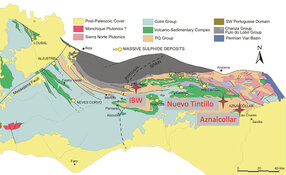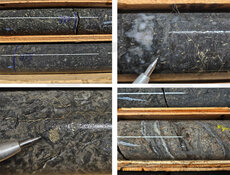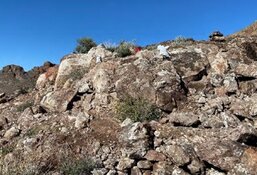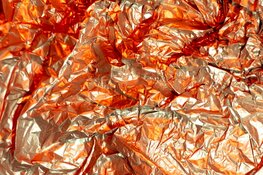The Metals Report: Lisa, how will the Dodd-Frank Wall Street Reform and Consumer Protection Act affect industrial users of metals like tantalum, tin and tungsten?
Lara Reisman: The Securities and Exchange Commission (SEC) adopted a rule mandated by the Dodd-Frank Act that requires companies to publicly disclose if they use "conflict minerals" that originated in the Democratic Republic of Congo (DRC) or a neighboring region.
It's a very broad-brush piece of legislation impacting about 6,000 manufacturers and tens of thousands of their suppliers.
TMR: I understand it gets really complicated on a number of levels. Certain metals mined in certain parts of the DRC are OK, but not in other parts of the DRC. Questions have arisen as to whether the SEC is the right agency to be implementing this sort of restriction and legislation.
LR: You're correct: It is not banning these minerals from all of the DRC but from within certain regions. The problem with a rule like that is that its implementation is typically more of a kneejerk reaction.
We've already seen companies saying that they are not sourcing any materials at all from the DRC—period—even those that are coming from conflict-free sources within the DRC and neighboring regions. Many manufacturers are trying to make sure that they are completely disassociated with the entire area.
Hopefully, companies will begin implementing conflict-mineral compliance programs as an alternative. But there's even some controversy about what kind of report needs to be submitted to the SEC.
Some legal challenges have been mounted over if the SEC even has the right to regulate this kind of thing because it's really about human rights as opposed to shareholder value.
TMR: It seems as if this legislation has enough holes to drive a truck through.
LR: I'd agree. A lot of questions came up before the rule was even published formally. Steel mills that basically take scrap were wondering how they are ever going to find out whether a washing machine manufactured in 1955 has conflict minerals in it. That is impossible to figure out. Some of the issues have bordered on the absurd.
TMR: When is that compliance deadline?
LR: Publicly traded companies have to file the first report in May 2014. Despite the legal challenge to the law, most companies are preparing for the worst, even though it's still possible for the whole regulation to be struck down.
TMR: Companies can submit a report saying they're not sure where its supply came from— that they are pretty sure it's conflict free, but not 100% certain—and they get a pass. Is there a chance that companies see this as an opportunity to stockpile to guard against supply shortages of these metals that are crucial to their businesses?
LR: No, because the clock started Jan. 1. Stockpiling would have had to have been completed by the end of last year in order for those materials to be allowed in a supply chain without knowledge of where they came from.
But is it happening? I think companies have stockpiled. Those companies are not the publicly traded original equipment manufacturers here in the U.S., but the suppliers in China and other places. They buy the conflict material, process it and shove it in the backyard and let it sit there. Then they mix it with their "good" material, and say, "Gee, I don't know if it has conflict materials or not. It's all mixed together."
How can you expect the publicly traded U.S. company to respond to that? If you're a tungsten buyer in the U.S. and your powder came from China, it probably does contain conflict minerals. You're not going to know for sure, and you're not going to be clear on that. Regardless, by next year, that little gimmick is going to have to be over.
TMR: MetalMiner.com and SpendMatters.com recently held a conference to make sense of where U.S. manufacturing stood on conflict-minerals compliance. What were some things you learned during those meetings?
LR: I learned that the more questions you ask, the fewer answers we seem to have. I say that jokingly, but the real issue is that nobody has tested this. Nobody has to file anything until May 2014.
A lot of basic questions still remain. For example, what counts as manufacturing?
"If you're a tungsten buyer in the U.S. and your powder came from China, it probably contains conflict minerals."
A friend, who's the assistant chief legal counsel at a well-known media company, said to me, "Ping me the second that rule comes out and let me know what the findings are." I looked at her, and I thought, "Are you crazy? Why do you care about it?" But the company has merchandising that it contract manufactures—little electronic devices, promotional items that have its brand and logo. It feels that it could be impacted by the rule. Companies that you never would have thought would be impacted are impacted.
This could also be a very large burden for smaller, privately held companies that supply publicly traded companies, which will be demanding they fill out extensive and comprehensive forms, tools and templates. They don't have compliance managers on staff. It is a big burden for small and middle-market companies to comply with their customers' requests, but they're fearful of losing business if they don't.
TMR: This legislation wouldn't have happened unless somebody was making money. Who is making money here?
LR: That's a great question. I would say the accounting firms are going to make money here. Software companies that have suites of products geared toward a company's sourcing, procurement and supplier relationship management stand to gain.
Hopefully, the people in the DRC ultimately benefit from this. However, a lot of people have lost their livelihood as many artisanal mines were shut down due to a kneejerk drop in demand.
TMR: What percentage of American industrial manufacturers that are using conflict metals and minerals are ready to comply with the legislation governing their uses?
LR: A lot of companies have no idea whether or not they're using conflict minerals. Most manufacturing supply chains are very long, in some cases easily 10 suppliers deep.
Take Apple assembling its iPhone—there are hundreds of components, parts, subassemblies and assemblies that make up that product.
Even Starbucks is probably impacted by this. You might scratch your head, but it has a new coffee machine that has an LCD display. It is not the contract manufacturer, but it designed the product so it is responsible for complying with the law. Does it know whether or not its LCD assembly has conflict minerals? I don't think a lot of companies know whether or not they actually have conflict metals.
TMR: Do investors realize what this law could mean to some publicly traded companies?
LR: It's a huge unknown at this point. Do companies that source ethically, use corporate social responsibility programs and have sustainability and green initiatives get rewarded by the stock price? I don't know the answer to that.
TMR: Could the regulation spawn more offtake or end-user agreements with resource companies that have viable deposits of these commodities in desirable jurisdictions?
"Invest in mining companies that are closest to production. That's still a very viable play."
LR: Definitely. Companies are not looking to skirt the law. They want to try to comply with it. To do that, they are going to be forced to look at alternative sources to develop the supply chain. It's a good opportunity for junior mining companies.
To some extent, the markets already work like that. Tantalum is a great example of a metal where companies basically buy forward. They're not buying on the spot market. They're buying on contracts. They're looking to shore up and lock-in long-term supply contracts. We will see more, not less, of that.
The other question is: Will this legislation effectively choke off certain sources of supply, which could trigger shortages? There will be opportunity on that front for tin, tungsten and tantalum.
TMR: Can you tell us about the market right now for tantalum, tungsten and tin?
LR: The U.S. government put out a Strategic Minerals Report recently that identified those three metals as critical and potentially problematic from a supply standpoint.
Tantalum is not necessarily in short supply right now, but the price is well supported. It's behaving differently than other metals, like steel, aluminum, copper and others that have fallen in price since the start of the year.
There are elements of the tantalum supply chains that are in short supply—a lot of domestic or non-DRC is available. In 2012, the U.S. imported $314 million ($314M) worth of tantalum. Of that, $108M came from China, $51.7M came from Kazakhstan and $43M came from Germany.
Tungsten looks a bit like tantalum except the majority of its concentration and processing is in China. From a conflict minerals standpoint, if your Chinese supplier tells you that the ore is conflict-free, can you believe it? Most manufacturers would probably say no.
The U.S. has only a small handful of producers, including Kennametal Inc. (KMT:NYSE), Allegheny Technologies Inc. (ATI:NYSE), a division within General Electric Co. (GE:NYSE) and privately held Buffalo Tungsten Inc., among a few others.
Tin has a lot of production in Malaysia and Indonesia, providing other supply options. Whether those are friendly sourcing locales where everybody wants to set up joint ventures is a different issue.
TMR: What are some examples of development-stage tantalum, tungsten and tin projects in conflict-free jurisdictions that manufacturers might be interested in starting relationships with?
LR: Commerce Resources Corp. (CCE:TSX.V; D7H:FSE; CMRZF:OTCQX) is an obvious one. It is extremely close to production this year or next. It is probably at the point where it is doing offtake agreements.
TMR: When is the earliest that its Blue River tantalum and niobium project in British Columbia, Canada, could be in production?
LR: Commerce is targeting 2014. It made the shift from being institutionally focused to being more end-user focused. It is trying to better understand who the big players are in the North American market and tying those relationships together. It is more visible to end users. It used to only be at rare earth metal conferences, but now I'm seeing it at places where end users of tantalum are.
There are other projects as well: one in Egypt that's quite substantial, Critical Elements Corp. (CRE:TSX.V) in Canada and NOVENTa (NVTA:AIM). Many of these companies are far from actually becoming operational, but Commerce and some of these others should make it to market.
Meanwhile, Buffalo Tungsten is quietly making its way. It's a family-owned company that's at least 30 years old, but who has heard of it? However, it is trying to make a splash in the tungsten industry, investing heavily in new equipment, trying to get some processing capability and making substantial investments.
TMR: NOVENTa is an interesting company because it's producing tantalum in Mozambique. Is that considered a conflict area?
LR: No, it's not. That's a really interesting opportunity. We are going to see alternative sources come from other countries within Africa. NOVENTa is completely viable.
TMR: And it is already in production.
LR: Exactly. If you were to go sniffing around NOVENTa's website, I'm sure you'd find that it has gone through quite a rigorous conflict-free smelter program. I'd be shocked if it hadn't.
TMR: About 80% of tungsten comes from China. Are there any smaller companies with tungsten deposits that are on your radar?
LR: There are several. However, no tungsten is mined in the U.S. Some of the smaller producers are EMC Metals Corp. (EMC:TSX), Buffalo Tungsten and Elmet Technologies Inc. The larger players are Global Tungsten & Powders Corp. , General Electric, Kennametal, and Allegheny Technologies. For Allegheny, tungsten is a much smaller operation. The U.S. does not mine it. It's the actual powder form. To be sure, we have a hole further up in the chain.
TMR: And tin?
LR: There is little to no tin production in the U.S. There are processors, but we don't mine tin in the U.S. There's Cookson Electronics Assembly Materials. The big 800-pound gorilla, Malaysia Smelting Corp. Berhad (MSGCF:OTC), is in Malaysia.
Tin is used in electronics, but also in steel production. Some forms of copper and bronze require tin as well. There is plenty of tin in the world. All you need to do is look at the London Metal Exchange price to see that that's true.
TMR: Is demand for tin weak?
LR: It's pretty weak right now. It's still a concern, though, because the U.S. doesn't have any tin mining. We are dependent on others, and conflict minerals compliance complicates the situation. It just adds another layer of pressure to that. I don't think tin is as worrisome as tantalum or tungsten.
TMR: What's your advice for investors who may want to gain some exposure to small- and mid-cap companies that are developing tantalum, tungsten or tin assets or are already in production?
LR: Invest in those mining companies that are closest to production. That's still a very viable play. I am definitely bullish on the "T" metals—tantalum, tungsten and tin. Unfortunately, a lot of the tungsten players are privately held companies. There is no exchange-traded fund (ETF) or stockpile-type fund that people can invest in.
TMR: Do you think that that could ever happen—a tungsten or tantalum ETF—or are these just too small?
LR: They're too small, and the industry is too concentrated. You'd have to get the big industry players to agree to do it to make it viable. There's an opportunity to stockpile. Whether or not you can create a fund around it, I'm not so sure. It's possible with tin because the price per unit of measure is expensive, relatively speaking. Tin has the most opportunity.
TMR: Thanks for your time today.
LR: Certainly.
Lisa Reisman is a third-generation metals enthusiast who began trading semi-finished aluminum metals in 1994, after earning her master's degree in public administration at New York University. Reisman eventually went on to the supply-chain management practices of Arthur Andersen Business Consulting, where she earned the nickname "Shredder." She then went on to Deloitte Consulting. She has worked with a range of industrial manufacturing firms, including Caterpillar, Motorola, Johnson Controls, Sanford Office Products, Hamilton Beach, Proctor-Silex and others. Reisman has primarily helped firms remove costs from their global supply chains. In 2004, the CEO of a Tier-1 automotive company challenged her to save his company money, so Reisman formed Aptium Global with partner Stuart Burns. The rest is history.
Want to read more Metals Report interviews like this? Sign up for our free e-newsletter, and you'll learn when new articles have been published. To see a list of recent interviews with industry analysts and commentators, visit our Streetwise Interviews page.
DISCLOSURE:
1) Brian Sylvester conducted this interview for The Metals Report and provides services to The Metals Report as an independent contractor. He or his family own shares of the following companies mentioned in this interview: None.
2) The following companies mentioned in the interview are sponsors of The Metals Report: Commerce Resources Corp. Streetwise Reports does not accept stock in exchange for its services or as sponsorship payment.
3) Lisa Reisman: I or my family own shares of the following companies mentioned in this interview: None. I personally or my family am paid by the following companies mentioned in this interview: None. My company has a financial relationship with the following companies mentioned in this interview: None. I was not paid by Streetwise Reports for participating in this interview. Comments and opinions expressed are my own comments and opinions. I had the opportunity to review the interview for accuracy as of the date of the interview and am responsible for the content of the interview.
4) Interviews are edited for clarity. Streetwise Reports does not make editorial comments or change experts' statements without their consent.
5) The interview does not constitute investment advice. Each reader is encouraged to consult with his or her individual financial professional and any action a reader takes as a result of information presented here is his or her own responsibility. By opening this page, each reader accepts and agrees to Streetwise Reports' terms of use and full legal disclaimer.
6) From time to time, Streetwise Reports LLC and its directors, officers, employees or members of their families, as well as persons interviewed for articles and interviews on the site, may have a long or short position in securities mentioned and may make purchases and/or sales of those securities in the open market or otherwise.









































